PPC
21 Copywriting Mistakes to Avoid for Better Marketing Results

Hemingway once said “There is nothing to writing. All you do is sit down at a typewriter and bleed.” But I don’t know that copywriters would agree with this. There are just so many factors to consider and details to remember for crafting stellar copy that rocks.
But lucky for you, I’ve gathered 21 common copywriting mistakes even experienced specialists make from time to time. Use it as a checklist whenever you need to write copy or review a draft!
21 copywriting mistakes to avoid for better marketing results
Below you’ll find a list of copywriting mistakes that are often all too easy or tempting to make. Some are minor while others can really impact your marketing results.
1. Not understanding the copy’s target
The most obvious yet often ignored mistake some writers still make:
They craft content in a way that makes sense to them, not the audience they need to engage. While it’s critical to know your product or service, there’s a difference between what you want to tell and what the reader wants to hear about it.
Ensure you know the buyer’s persona inside and out. A competent copywriter understands their needs, pains, motivations, frustrations, and possible objections because it helps craft compelling content that works.
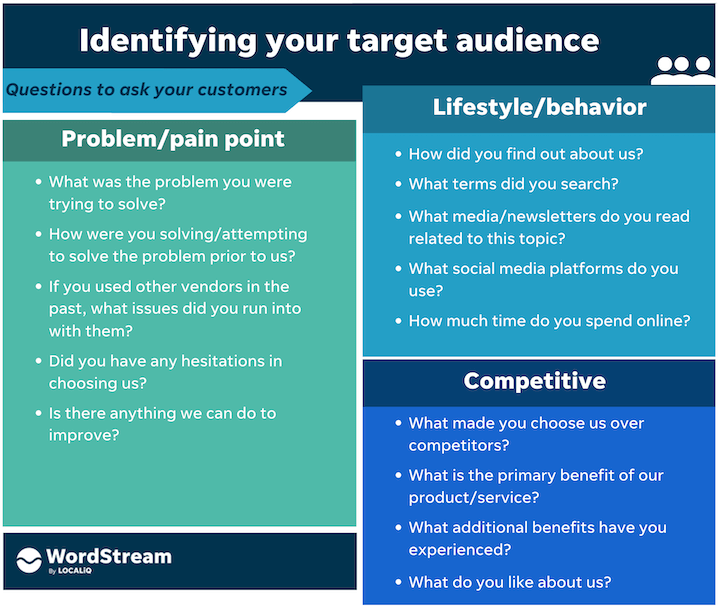
2. No problem to solve
Copywriting is about getting the audience to act. But to act, they need to understand the problem this action will help them solve. It’s wrong to assume that the reader knows it.
Outline the problem in your content. Remember the “What’s in there for me?” issue: When reading, a person looks for a clear answer to this question.
Example:
- Grab our marketing guide!
No problem to solve here; a reader doesn’t understand why they need to take this guide. - Grab our content guide to help you write persuasive marketing copy!
The reader understands what’s in there for them in your content.)
Here’s another Google Ad example that has the problem stated within the copy:
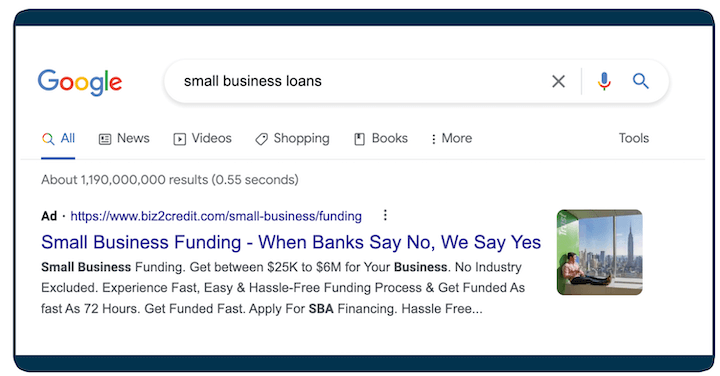
3. Wrong tone
The golden rule of copywriting: Follow the brand’s tone of voice when crafting all of your copy. If unable to capture that tone and stay consistent, you won’t hit the target market.
The tone of voice is about a brand’s values, philosophy, and attitude toward its audience. It determines the lexical items and sentence structure you’ll use in copies to communicate the message. It allows you to speak the same language as the audience and make them want to listen to you.

If your client doesn’t have a brand book or style guide describing their tone of voice, the minimum you can do is to read their previously published content to mirror their communication style in your writings.
4. Opening with boring generalizations
All too often, writers start out a blog post or marketing email with a generic absolute or boring generalization. For example:
- It’s not a secret that sugar harms our health.
- Everyone knows that smoking is dangerous.
Such claims convey no meaning or value. Why write it if it tells nothing new?
Anyone can create such generic content online. If you want to write compelling marketing copy, use interesting information backed up by statistics and research, quotes from influencers in the topic, or testimonials from customers.
Instead of the above, how about:

You can get more tips on how to write an introduction here.
5. Ignoring the audience’s motivation level
This mistake is about forgetting the sales funnel stage of your target reader. Before you can write effective ad copy, you need to know where they are:
- Have they already heard of your brand or product?
- Are they ready to purchase?
- Do they have any questions, doubts, or fears left that could hold them back from purchasing?
Here’s a great example of emotional ad copy that plays on the target audience’s doubt:

Bottom line: You need to understand how aware, skeptical, and motivated your reader is. It helps you choose the right copywriting technique and decide on proper calls to action for a copy.
6. Weak headlines and subheads
Not only is reading online 25% slower than from print, but users also don’t read but scan web copy. Headlines and subheads guide them through content and help them understand if it’s worth their time.
That’s why a good copywriter makes these two copy elements count.
Stellar headlines and subheads are short, specific, and relevant to the content. The element of emotional writing is also worth trying to grab attention, evoke curiosity or FOMO, and motivate users to keep reading.

A headline example for a piece of content about headlines…
- Weak headline: Headlines to Try in Blog Posts, Ads, Emails, and More
- Strong headline: 88 Headline Examples you Can’t Help But Click
7. Lengthy sentences
Quick question: Can you find a period in this sentence?

Unless you’re Oksana Zabuzhko, a Ukrainian novelist and essayist practicing super long sentences in her works (the above text is hers, from The Museum of Abandoned Secrets; you can find its audio version in English), avoid this practice.
Long sentences hurt your content’s usability and readability.
Remember that online users read only 20-28% of your text; focus on brevity.
8. Too formal
Copywriters know that web writing is conversational, and we speak to the audience in their language if we want to engage them.
But it’s challenging to strike a balance between conversational and casual. Afraid of losing this balance, some authors may sound too formal. They use complex sentences, academic language as if they write college essays, etc.
This is a mistake. It scares the reader away. The minimum you can practice to prevent this is to insert some conversational phrases like “you see” or “can’t” instead of “cannot” into your copies.

The ideal variant is to know and follow your brand’s tone of voice.
9. Too much jargon and buzzwords
Even though 21% of U.S. adults are illiterate, even those with high literacy skills won’t spend time reading your unnecessarily complex texts.
Niche jargon and buzzwords are a no-no when it comes to copywriting.
If a person has to take a dictionary to understand what you write, they’ll hardly enjoy and get engaged with your message. Readability testing tools can help you see whether you’re stuffing your marketing collateral with too many overcomplicated words.
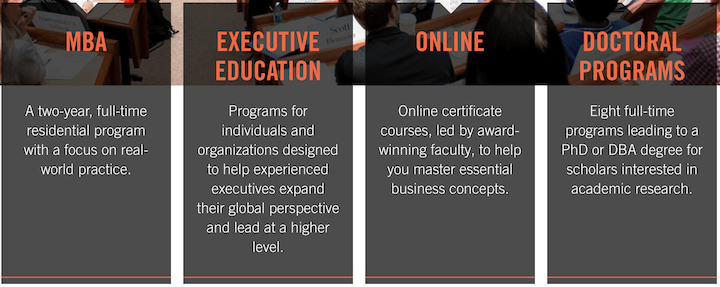
This copy is written for Harvard graduate school candidates. But does it use fancy words? Nope.
10. Ignoring mobile copywriting
Let’s face it: Most think of web-based copywriting when seeking a content specialist for their brands. But what about 4.32 billion internet users consuming your message from mobile?
When writing and formatting content, it’s critical to remember such a broad audience.
Design it for thumb-stopping visuals, short sentences, and easy-to-read font sizes for headlines. Eliminate unnecessary words, write up-to-point subheads, and consider short paragraph lengths.
11. Ignoring or overdoing SEO
When writing marketing copy, it’s also worth remembering how people will find it online. SEO writing elements will help search engines understand the context and rank your pages accordingly, but it’s essential to strike a balance here.
Focusing too much on optimizing your copy for keywords will do more harm than good. For Google, it will look like spam; for users, it will sound awkward and unnatural to read.
12. Too many modifiers
Adverbs and adjectives (especially beneficial ones) are powerful copywriting instruments. The trick is to know the limit.
Every modifier you use in content should serve for driving it. When overused, they make your copy wordy: Users can lose the core message you communicate.
- Too many: Add this beautiful and comfortable leather couch to your bedroom to give yourself a cozy corner to sit with a neutral yet stylish look that matches your room design (six modifiers).
- Just right: “This comfortable leather couch has a neutral color to match your room’s design. (three modifiers).
13. Too many intensifiers
Intensifiers are words we use to emphasize adverbs. There’s nothing wrong with them unless they become redundant, turning your copy into balderdash.
When used too often, intensifiers become nothing but fillers. They seem to be what Stephen King had in mind when saying, “The road to hell is paved with adverbs.” Most are -ly adverbs:
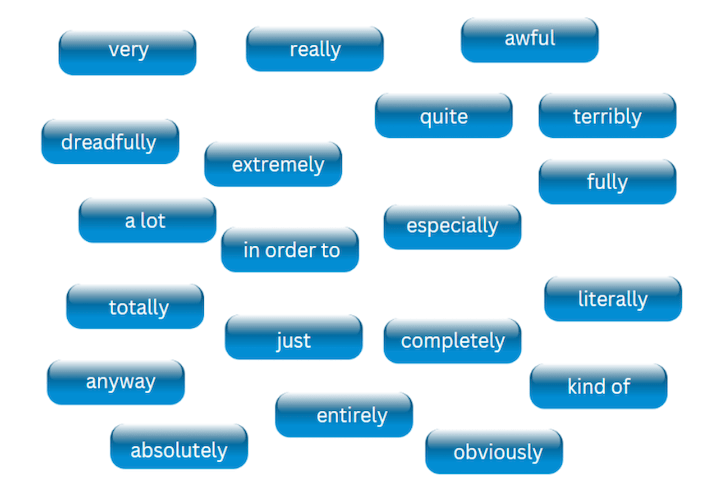
When possible, avoid such words in your content. You can always find an alternative power word that sounds stronger. Thus, “critical” or “essential” looks more confident than “very important.”
14. Boring words
Most writers have words or phrases they use too often. (Mine are “here,” “professional,” and “when it comes to”). When overused, they make your copy monotonous and dull to read.
Do your best to stop overusing certain words in writing. Analyze your copy, consider repeated phrases, and grab a thesaurus to change them and make your texts more engaging.
15. Weak formatting
As a rule, copywriters don’t think about their texts’ makeup. They follow the basic rules of web writing but ignore the content usability blunders that can make them lose readers.
These blunders are:
- Right align
- Hard-to-see subheads
- Wrong font size
- Complex text structure
- Large text fields
- Poor color-contrast ratio
- No paragraphs
When writing, please think of how your text will look online.
The ideal variant would be to know beforehand where the copy will go live. A page layout will help you see the website’s typography and format your text accordingly.
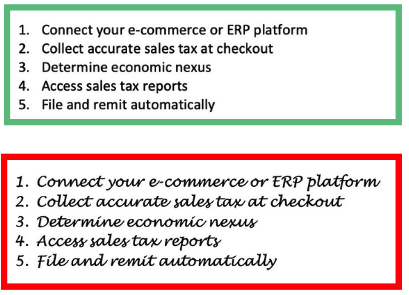
The readability of your font impacts the effectiveness of your copy! Learn more in our copywriting psychology post.
Formatting influences the reading experience and communication with the audience. Why lose readers simply because they can’t visually perceive your information?
16. Wrong use of emotional triggers
Copywriting is about triggering an emotional response from users, encouraging them to stay with a brand, and motivating them to act.
Knowing this, some authors use emotional triggers for evil, manipulating a person’s fear, uncertainty, and doubt (FUD) in their copies. While such manipulation can be a powerful sales tool, its overdose doesn’t work for building an ongoing customer relationship.
17. Wrong CTA, multiple CTAs, or no CTA at all
While copywriters know that a call to action (CTA) is a must, some aren’t sure how to make it effective.
A good CTA:
- Creates a sense of urgency;
- Tells the user what to do right after reading the copy;
- Gives the user a compelling reason to take that action.

A big mistake is to include several CTAs on one page, especially if they lead to different pages or ask to take a few various actions. Readers won’t understand what to do.
Give them the easiest possible path to the next step, and don’t limit yourself to boring “Buy now” or “Click here” options. Get creative with a CTA text, and don’t hesitate to use “I” and “me” pronouns. It makes your CTA sound more authentic and personalized.
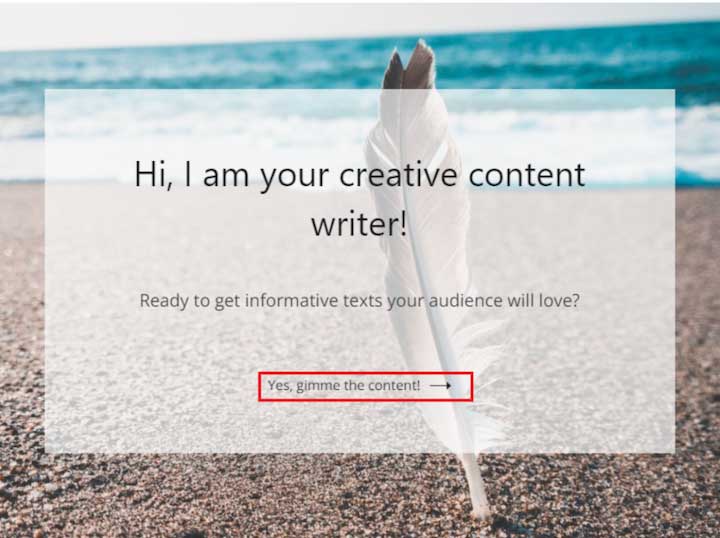
18. Too many colloquialisms or idioms
Colloquialisms (regional phrases) and idioms can add color and personality to your writing, but too many can be distracting with business copywriting.
Be careful with your “cold cucumbers” or “raining cats and dogs” as not all readers will understand them and you may not be able to convey the message you intend.
19. Too many features but no benefits
This is a common mistake of newbie copywriters and those lacking information about the buyer persona’s needs and pain points.
They describe the product features but don’t tell the audience how those features can benefit them, which is critical to do in marketing messaging: You should give readers a reason to buy.
Make friends with feature-benefit writing:
- Lead with benefits. Answer the “So what?” question. Explain how your product or service can improve a reader’s life if they choose it.
- Back up the benefits with the features that make them possible. This puts the customer first and adds credibility.
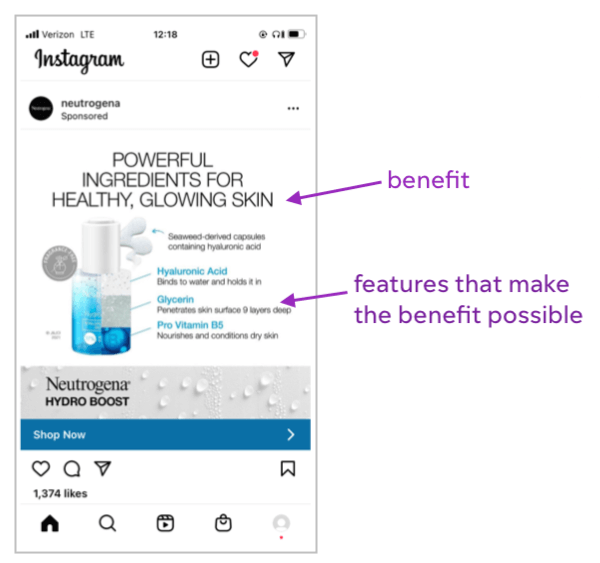
20. Relying on copywriting formulas too much
Tons of copywriting best practices are online for us to learn and use in texts. Based on other writers’ experience, these tips are great to use as a guideline or starting point.
But often, these copywriting formulas are just prevalent practices that worked for someone. Who said they would work for your readers?
Examples:
- They say: Odd numbers capture more attention. True, but it doesn’t mean even numbers will kill your copy’s engagement.
- They say: The word “free” is a surefire way to grab a reader. Maybe, but some people will see it as a signal of spam.
- They say: These headline formulas work. Let it be, but those formulas won’t rock if they don’t suit your audience or content strategy.
The point I’m trying to drive home is, it’s a mistake to believe and follow all copywriting formulas in your texts. Test them with your audience rather than assuming they will work for you because they worked for another copywriter.
21. Being too salesy
Online users are not naive or stupid. They understand your copy is about selling something, so they don’t need you to focus their attention on that. Too aggressive, direct selling messages in texts cause a backfire.
Rejection.
Instead, tell a story about your product, use testimonials from satisfied customers, and focus on appealing language to make the audience want what you have for them. A compelling call to action at the end of your content will be enough for readers to act.

Use our elevator pitch templates to write convincing but not salesy content!
Keep your copywriting on the right track
So now you have it: the long list of copywriting mistakes. Make checking the above items a part of your editing routine. Ensure that all words, tone, and writing formulas in your copy make sense, serve a purpose, match your target audience, and drive your goals forward. Your audience (and business) will thank you for it!
About the author
Olesya Filipenko is a seasoned web writer creating informative and educational content for small and medium business websites’ blogs on digital marketing, content marketing, and creative writing. You can find her at WritingBreeze.com and on Twitter @WritingBreeze.
PPC
How to Brainstorm Business Ideas: 9 Fool-Proof Approaches

There are 33 million small businesses in the US alone, and 5.5 million new businesses are started every year. And yet, the beauty of this ever-growing world is that there’s always room for one more business. So if you aspire to start a business, we support you!
And if you need a little help with ideas and planning, you’re in the right place. In this article, we’re sharing nine ways to brainstorm business ideas to help get you off on the right path.
Contents
- The problem-solving approach
- The personal inventory approach
- The market research approach
- The competitive analysis approach
- The business name approach
- The influencer approach
- The networking approach
- The freelance website approach
- The Gen Z approach
How to brainstorm business ideas: 9 ways
The best part about brainstorming is that there doesn’t have to be a formal process. You can use one of these approaches or a combination of any of them. The goal is to get the juices flowing and see where they take you!
1. The problem-solving approach
This approach is centered around pain points. Put your pain point glasses on for a day and pay attention to every little thing that you find even the slightest bit inconvenient, cumbersome, challenging, boring—basically any negative adjective you can think of. Then brainstorm ways you can solve those problems. The more common the task, the better, because the greater the need.
For some inspiration, check out these creative products you never knew you needed by Lifehack.

An umbrella cupholder? I’d buy one.
💡 Once you’ve identified your business idea, you need a strong value proposition. Learn how to create one in our free guide >> How to Create a Unique Value Proposition From the Ground Up
2. The personal inventory approach
This is the tried-and-true approach to coming up with small business ideas. Take a personal inventory of what comes naturally to you. Consider:
- Your passions: Things you care about
- Your core values: Standards you live by
- Your best skills: What you’ve become good at with practice
- Your talents: What you’re naturally good at without any practice
- Your hobbies: Things you could do all day
List these out and see what kinds of ideas arise from them. I personally recommend this as the top way to brainstorm business ideas, because the more aligned your business is with your core self, the less friction you’ll experience in starting, running, and growing it.


There are several ways to map out your personal inventory, like this one.
3. The market research approach
This is the more practical approach to take when brainstorming business ideas, and one you should incorporate into any of the other approaches. After all, you need to make sure you can actually go to market with your idea and be positioned for long-term success.
Consider industry trends, emerging technologies, and consumer behavior so you can get an idea of the competitive landscape, identify unmet needs, discover niche audiences, and more. Market research encompasses a broad range of strategies, including surveys, social media listening, reading research reports and surveys, using market intelligence tools, and more.
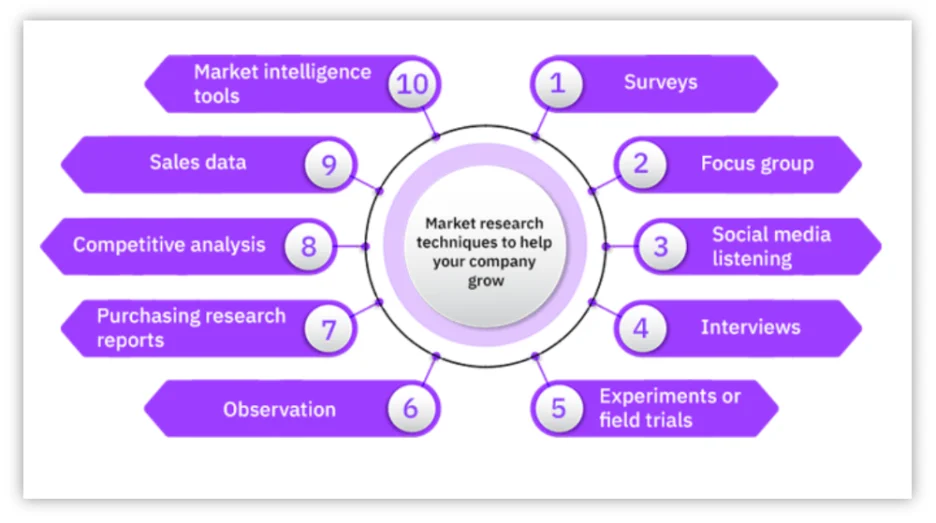

📚 Free guide download >> 135 of the Best Words & Phrases for Marketing with Emotion
4. The competitive analysis approach
Competitive analysis technically falls under market research, but these are so effective that they’re worth calling out as their own approach. In short, a competitive analysis systematically examines the key components of other businesses like yours so you can identify gaps to fill and how to best position yourself. You can look at strengths, opportunities, weaknesses, and threats (SWOT analysis) or use any other criteria that works for you.
This approach is great for once you’ve got a clear picture of the type of business you want to start but want more guidance on coming up with the details of that business (like your target audience, buyer personas, value proposition, etc.).


For help with this, use our competitive analysis templates!
5. The business name approach
This, of course, should not be your only approach, but it’s a good strategy to throw in when you need a break from all that market research. Creative business names can give way to creative business ideas, and vice versa.
Do a business naming brainstorm session—use our list of creative business names to start! Just remember, there’s a practical process for naming a business, so be sure to check out our post on how to come up with a business name so you can be prepared.
6. The influencer approach
The right way to come up with a new business idea depends on what’s driving you to start a business in the first place. And if it’s simply that you have an entrepreneurial itch, but no prior experience, then take the time to expose yourself to some entrepreneurial inspo!
Read books written by entrepreneurs, listen to small business podcasts, and start following inspirational business owners on social media. You’ll open yourself up to a wide range of concepts, perspectives, approaches, and mindsets that can give way to great business ideas.
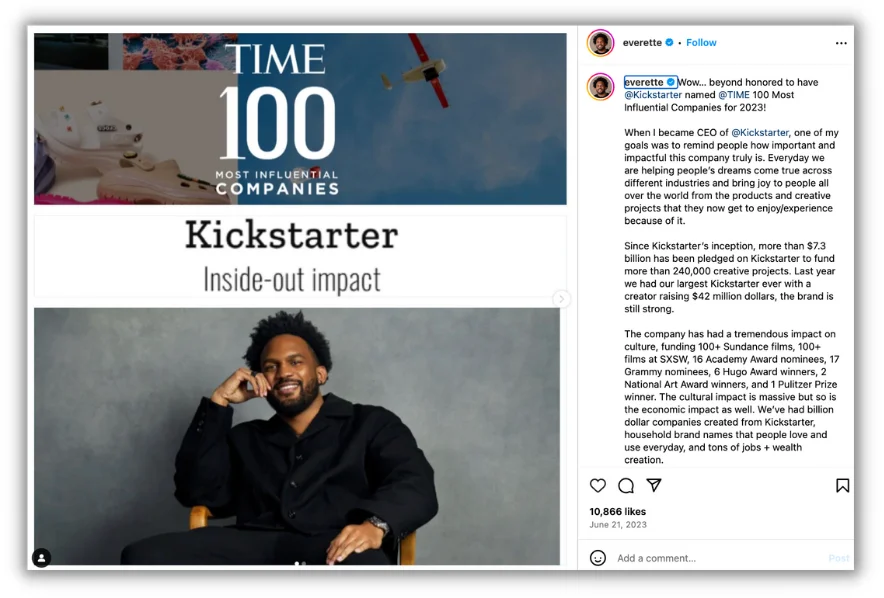

Everett Taylor is one of many inspirational entrepreneurs you can follow on social media.
7. The networking approach
In addition to following popular entrepreneurs on social media, it’s also a good idea to network with “regular” entrepreneurs. The influencers can provide inspiration but talking with people just like you will give you an added level of practicality to your ideation process.
Find networking events and discussions happening in your local community and even virtually. Here are some broader small business networking groups to start with.


SCORE is a great place to find local networking events in your area.
8. The freelance website approach
Who says your new business has to be unique? If you’re looking to start a freelance business, take a look at popular websites like fiverr and Upwork. You can find business ideas that use skills and talents you already have, or ideas that require you to develop new skills to reach growing markets.
For example, take a look at fiverr. The navigation menu and “popular services” section alone can give you a starting point from which to generate ideas.
- Website development
- Logo design
- SEO
- Architecture and interior design
- Social media marketing


fiverr’s homepage alone is filled with business ideas based on demand or skillset.
9. The Generation Z approach
Generation Z is the upcoming generation of consumers, and they are known for being partial to brands that name specific core values and stand for them. If you’ve got a cause you personally care about or specific set of values that you live by, let this serve as the foundation of your business idea.
Examples include sustainability, civil rights, individuality, accessibility, and more. Similar to the personal inventory approach, starting a business out of something you’re personally connected to tends to reduce friction throughout the business’s evolution. Check out our post on Gen Z marketing strategies to see if you have anything in common with them!
Start brainstorming business ideas now
Like I said at the start, even with so many businesses already up and running, the world is always growing and changing. Its many facets—consumer needs, industry trends, personal passions, and more—form a dynamic ecosystem that is always producing opportunities. Use the tips in this post to brainstorm business ideas that align with these opportunities!
PPC
How to Craft Compelling Google Ads for eCommerce

Many of those involved in PPC tend to be the data geeks. That means we often focus more on impression share ratios, target ROAS, and search queries than the creative side of advertising. With Google doing more and more of the heavy data lifting, marketers need to understand that the two things AI and machine learning struggles to replicate are creativity, and a deep understanding of our customers.
High CTRs, alongside highly relevant ad copy, are rewarded with higher quality scores which leading to lower cost per clicks. Lower CPCs are ever more important as the barrier to entry to setting up an ecommerce business is the lowest it’s ever been (and getting lower), especially with the rise of Shopify.
To stand out from the crowd, you need to present a real, tangible differentiation in the market place. Which means you need to be creative with your copy.
Media buyers will often talk about selling points and how you have to showcase your benefits within the ad copy. Ecommerce PPC has 3 core ad copy pillars that the sale hinges on:
1. Your Site
2. Your Product
3. Your Offers
The below highlights some examples in more detail:
Ecommerce Site Selling Points
- Free Delivery Over X: This is a strong incentive for customers to increase their basket size.
- Over 300 5-Star Reviews: Having over 300 5-star reviews demonstrates that you are trusted and have a proven track record of looking after your customers.
- Exclusive To Us: Offering products exclusive to one’s site can create a sense of uniqueness and urgency
- Each Order Donates £1 To Charity: Incorporating charity into each order by donating a fixed amount portrays the brand as socially responsible. This can resonate well with socially conscious consumers.
- Secure Payment: Security in payment processes reassures customers against fraud, leading to increased conversions.
- Fast & Free 2 Day Delivery: Fast and free 2-day delivery appeals to the immediate gratification desire of shoppers.
- 30 Day No Hassle Returns: A 30-day no-hassle return policy reduces the perceived risk of purchasing and encourages trying out new products.
Product Selling Points
- UK Made: Products made in the UK appeal to a sense of national pride and suggest a certain quality
- 31% More Powerful / Finished in 10 Minutes: An item being 31% more powerful or promising completion of tasks in 10 minutes conveys efficiency and value.
- As Seen in Vogue, Cosmopolitan: Having products featured in reputable magazines like Vogue or Cosmopolitan can significantly bolster brand prestige. Where have you have been featured? Can you lean on this angle?
- Made With Bamboo, Cotton, Sustainable / Recyclable: Products made with sustainable materials like bamboo and cotton can appeal to environmentally conscious consumers. Offering recyclable packaging can further enhance the eco-friendly image of a brand. Think about what is currently trending. If you’re a socially conscious brand it will always be worth highlighting.
Types Of Ecommerce Offers
- 20% Off With Code HERES20: A 20% discount using a specific code such can be a direct call to action that stimulates sales. Better to use sparingly otherwise you may end up losing brand equity.
- Spend £100 to get £10 Off: Encouraging customers to spend more to receive a £10 discount can effectively increase average order value. This can especially work well with tiered offers.
- Buy 1 Get 1 Free: A ‘Buy 1 Get 1 Free’ deals can double the perceived value for a customer, making it a compelling offer. Often works well on lower aov items.
- Free Delivery: Offering free delivery, regardless of the purchase amount, is always a powerful motivator for customers to complete a purchase. It’s often the easiest to implement.
- Free Gift With Order: If you sell products that complement free gifts you should make the most of them. Some brands employ this tactic as an ongoing incentive, as it works especially well if the gift is also sold on site for a lower price.
- New Customer Offer: 10% off for new customers only is a common but effective offer for ecommerce. This is good for more established brands that don’t want to lose margin on previous customers who were planning to buy anyway.
How To Know Which Copy to Use?
Knowing what your customers want is 99% of the battle to achieving higher quality scores, clickthrough rates, and even conversion rates as you raise their buying temperature. Your copy should reflect who your audience is, and what they need from you. You also need to factor in the following when crafting copy that is going to resonate:
- Demographics: Age, gender, income, occupation, education
- Psychographics: Personal values, beliefs, interests, lifestyle
- Identifying Pain Points: Feedback, surveys, market research, reviews, analytics
Ad copy should align with the search intent of the audience, which can range from informational queries to transactional searches. You can uncover this through the initial stages of keyword research. It’s best practice to group your keywords by their intent.
Here’s how keywords are often segmented:
- Informational – e.g. what are the benefits of aloe vera for skincare?
- Competitor/Navigational – e.g. the body shop
- Transactional e.g. Aloe Soothing Day Cream 50ml
This should get you thinking deeper about how to position your ad copy and all the angles you can take. Start with a blank spreadsheet with 3x columns and write down 5-10 points across site selling points, product and offers you can implement.
Amore Digital is a boutique Google Ads Agency that has a mix of ecommerce clients from pet, fashion, automotive, healthcare and more. We provide a specialist service with Google Shopping, Feed management, Pmax management and search marketing consultancy.
PPC
Does Ad Strength Matter in Google Ads?

Ad Strength is one of those metrics that ebbs and flows in importance. Right now, there’s been an uptick in conversations Google’s Ad Strength metric. Those discussions were prompted by a recent press release from Google around some new features coming to the platform. These updates were mostly centered on updates coming to Performance Max capabilities using AI for text and imagery.
So we felt like now was a good time to dive into Google Ad Strength and discuss whether or not it actually matters—and how to improve it if it does.
Contents
What is Ad Strength?
Before we get into whether or not you should pay attention to Ad Strength, let’s talk about what it is.
Essentially, Ad Strength is meant to help advertisers develop strong ads that are more likely to perform well based on Google’s data, but is only used as an indicator, not an actual ranking.
In that way, it’s very similar to Quality Score or Optimization Score. Both are meant to help advertisers develop strong keyword lists and ad accounts, but aren’t actual dictators of how the account will do.
🛑 Worried you’re wasting spend in Google Ads? Find out with a free, instant audit >> Google Ads Performance Grader
How does Ad Strength impact Google Ads?
Does not having the necessary quantity and variety of assets negatively impact your ad performance?
If you look at the definition of Ad Strength…

…it almost seems like it would have a negative impact. Specifically, the last two sentences calling out maximizing performance and the effectiveness of your ads.
But countless advertisers have had different experiences, many of them claiming that their Poor ads actually outperformed the Excellent or Good ads in their accounts.
Additionally, you may notice that ads with a Poor or Average Ad Strength don’t have as many impressions as those with Good or Excellent ratings.
So, does a low Ad Strength mean your ads are going to have their impressions throttled?
The short answer is no to both:
- Ad Strength will not impact the performance of your ads on Google.
- A low Ad Strength will not prevent your ads from showing on Google.
But here’s the thing…both of those things COULD happen IF you have low Ad Strength.
If your Ad Strength is low, you could see worse performance for those ads. Your ads also might not win many auctions if they have Poor Ad Strength.
Google has emphasized many times that Ad Strength is only an indication of how well your ad is constructed based on their internal best practices.
After some other articles were written, Ginny Marvin, Google’s Ad Liaison, responded with this message:


⚡️ Is your Google Ads account set up for success? Download now >> The Last Guide to Google Ads Account Structure You’ll Ever Need
Recent updates that impact Ad Strength
As I mentioned, Google recently released some updates to its Google Ads platform that have put a spotlight on Ad Strength. You can read that article here and hear about how we think these changes lean into Google’s two main focuses for Performance Max updates here.
But one paragraph caught the eye of many advertisers and really started this whole Ad Strength discussion:


Google says that moving forward, the quantity and variety of assets will now play a larger role in your Ad Strength scores for your creatives. Basically, “since we’re making it easier for you to have these additional assets and variety, we’re going to start holding you accountable to these standards.”
For the most part, advertisers don’t have an issue with this…but with the actual impact of Ad Strength as a whole.
Should you pay attention to Ad Strength?
(I’ll start this section by saying that I’m writing this from my own personal experience as well as those that I’ve heard from others. I’d love to hear from anyone who disagrees with my approach or would tweak it based on your own experiences. The more points of view, the better.)
Now that you’re caught up on the recent discussions in the industry and I have my disclaimer out of the way, let’s focus on what actually matters for your day-to-day:
Should you pay attention to Ad Strength or not? If so, how should you pay attention to it?
My opinion: sometimes.
Your goal as a marketer should always be to create ads that are as relevant and meaningful as possible to your clients and their respective customers. If you’re doing this well, you’re likely going to hit most of the benchmarks for a high Ad Strength right out of the gate. And that applies for all ad formats.
💡 Want to learn more about search engine marketing on Google? Get the free guide >> PPC 101: Complete Guide to Google Ads
How can you improve Ad Strength?
Here are a few high-level suggestions for best practices with ads:
- Create compelling messaging that highlights the business’s strengths.
- Answer the customer’s query or relate the ads to the content they’re viewing (if possible), i.e. include keywords or something relevant to your targeting.
- Test different variants of your messaging. You never know what will work best.
- Leverage all the bells and whistles you can including images, videos, logos, locations, ad assets, etc.
While those have been many of the ad copywriting best practices (in my mind) for a long time, it’s not as obvious that they’re tied to Ad Strength as well.
Whether it’s the Ad Strength indicators for Responsive Search Ads:


Or the different ratings you can achieve with Performance Max:
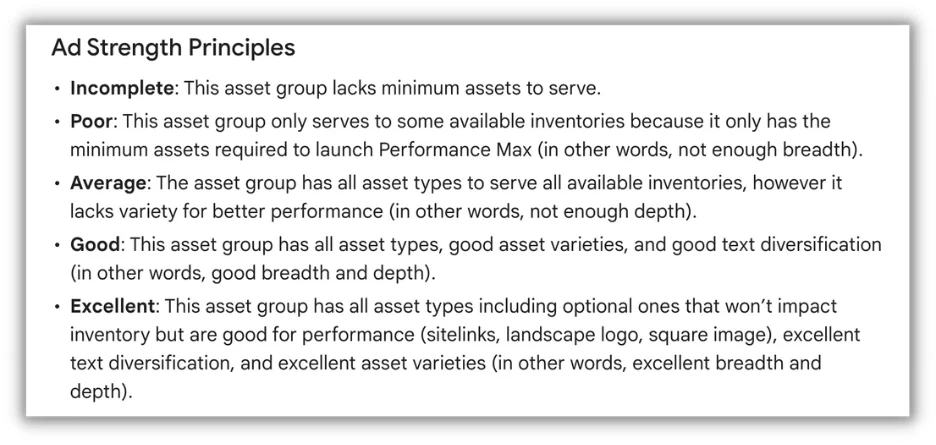

Those best practices get you most of the way there. Your job is to then monitor your ad performance and determine if you need to make adjustments.
If you’re seeing good performance from your ads and you’re happy with everything, you might not care what your Ad Strength is.
If you’re not getting the results you need, maybe look at the Ad Strength Improvements column and see what guidance Google gives.
You can even take it one step further. Click to edit the ad and see what suggestions Google has for you on each of the suggested areas for improvement. I have it blurred out below, but there are a handful of new headlines suggested for this ad variant that Google thinks could be better. Maybe they work, maybe they don’t, but I at least have some new ideas that I didn’t have to think of on my own.


For Performance Max, you can now create all sorts of new assets directly in the editor without much work. There’s almost no excuse for not having more ad assets to help you level up your score.
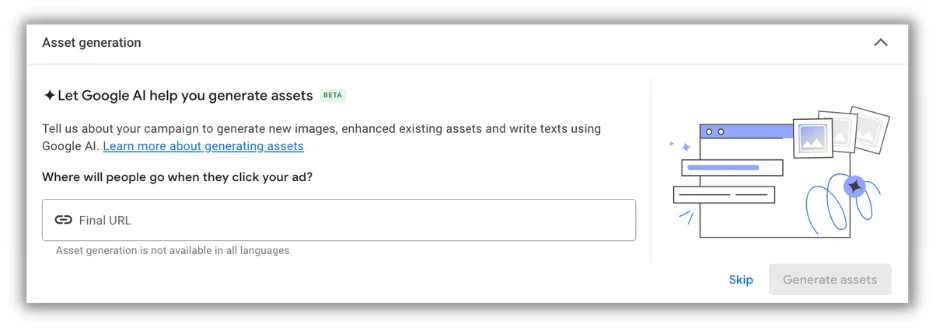

Don’t make Ad Strength your campaign’s weakness
As a reminder to close this out, don’t optimize to Ad Strength just because Google promotes it. Don’t forget, Ad Strength is not your KPI. Focus on your business KPIs and use Ad Strength as you need to maybe make some improvements.
Need help with your Google Ads campaigns? Find out how we can help.
-

 SEO7 days ago
SEO7 days agoWhy Big Companies Make Bad Content
-

 PPC7 days ago
PPC7 days ago26 Ready-to-Go AI Prompts for Social Media
-

 SEO7 days ago
SEO7 days agoHow To Drive Pipeline With A Silo-Free Strategy
-

 MARKETING6 days ago
MARKETING6 days agoGenerative Engine Optimization Framework Introduced in New Research
-
SEARCHENGINES4 days ago
Daily Search Forum Recap: May 3, 2024
-

 MARKETING5 days ago
MARKETING5 days agoLet’s Start Treating Content More Like We Treat Code
-

 MARKETING4 days ago
MARKETING4 days agoTinuiti Recognized in Forrester Report for Media Management Excellence
-

 MARKETING3 days ago
MARKETING3 days agoHow Tagging Strategies Transform Marketing Campaigns















You must be logged in to post a comment Login